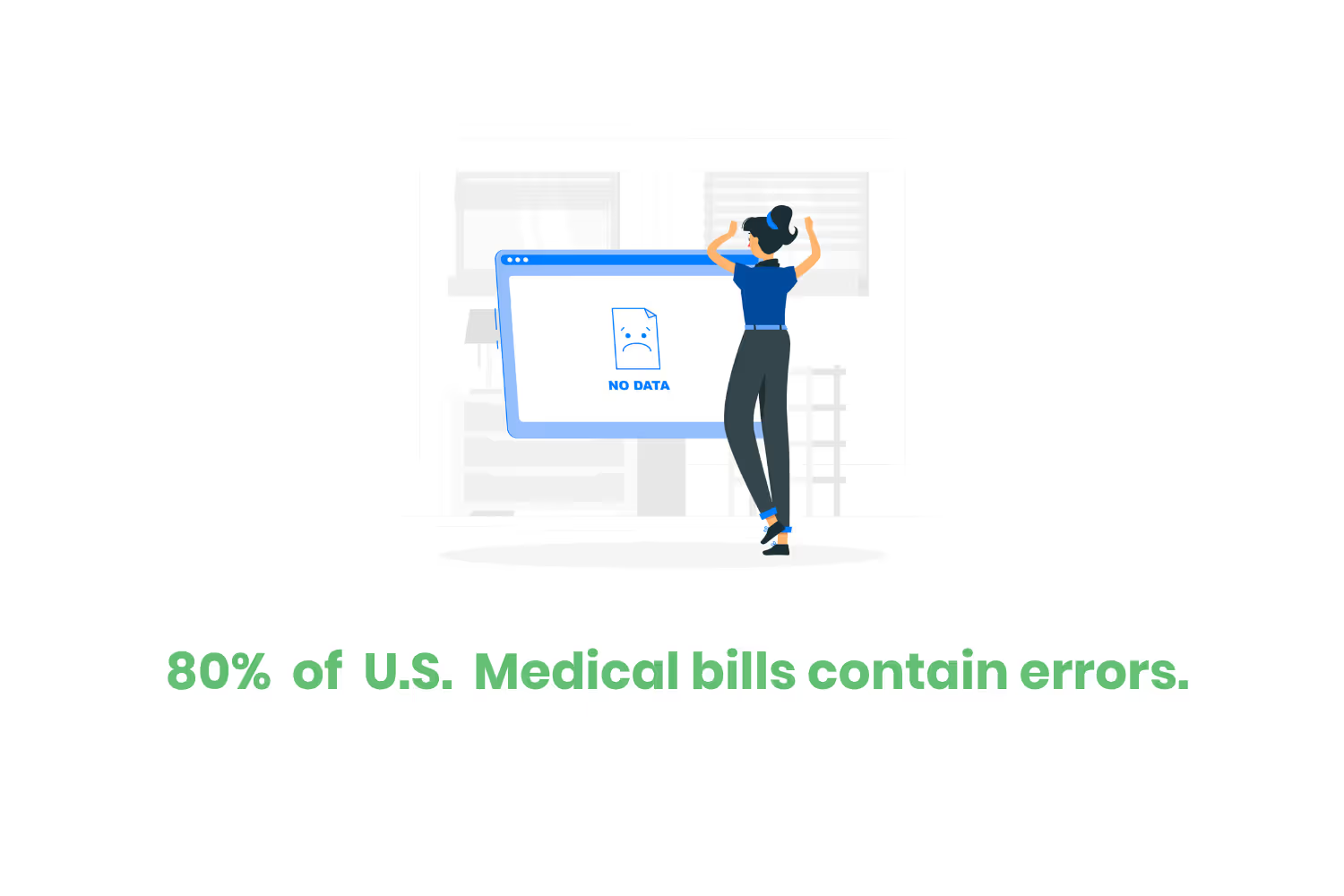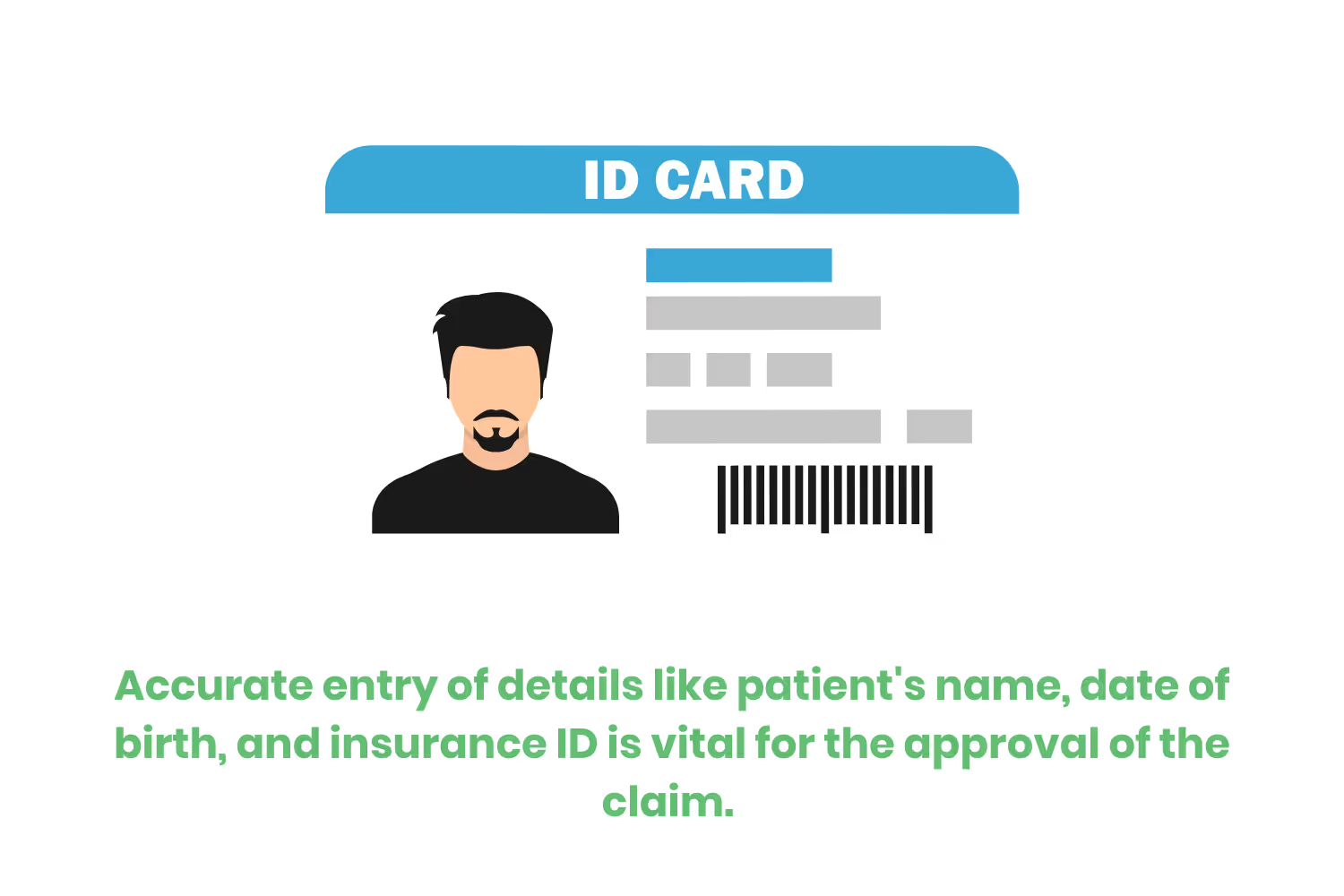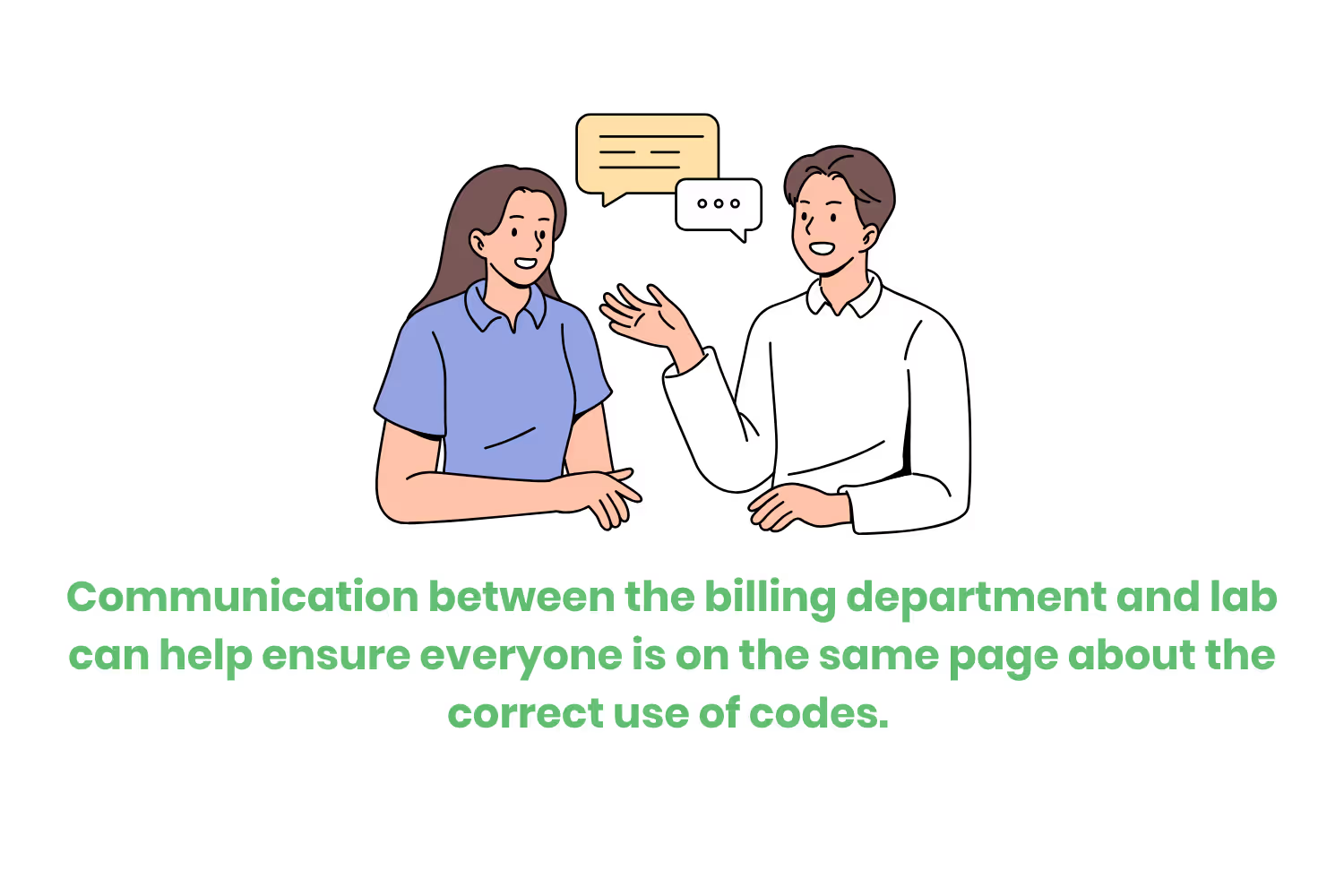The Confusion Around PLA Codes: How to Avoid Costly Billing Mistakes
In today’s blog, we are going to dive into the confusion around PLA codes and how to avoid billing mistakes.

Did you know that 80% of U.S. medical bills contain errors?
You probably read that and ask yourself, "What does that really mean?”. If claims contain errors the overall claim will be denied by the insurance provider. This is due to the insurance company not having the correct information to determine if the bill will be covered or not.

If a claim gets denied this throws a wrench in the entire revenue cycle process. This is because the claim gets sent back to the billing department with a denial code. After the department finds and corrects the claim it will be sent back to the insurance provider. This can take a long time depending on the error in the claim further delaying the time it takes to receive revenue.
In today’s blog, we are going to dive into the confusion around PLA codes and how to avoid billing mistakes.
Let’s jump into it!
What are PLA Codes?
Before we deep dive into why there is a large confusion around PLA Codes, let's first go over the basics. PLA codes, or Proprietary Laboratory Analysis codes, are specific sets of numbers to help doctors, labs, and insurance companies identify the tests performed.
These codes were introduced to help close the existing gap in the medical coding system, which previously did not cover specialized lab tests. With their introduction, PLA codes had a significant impact on the billing process, helping to streamline it by providing codes for these unique tests.
You may be saying to yourself, ‘PLA codes sound a lot like CPT codes and you are right they do sound similar but they are extremely different. PLA codes are specifically designed for lab tests, while CPT codes are general medical codes that cover a large range of medical procedures.

Why Are PLA Codes Confusing?
Now that you have a basic understanding of what PLA codes are, you may be wondering why they can get so confusing. Well, there are a few different reasons they can get confusing.
Frequent changes/updates
With the constant changing of medical tests, PLA codes are changing with them. To show how drastic PLA codes can change. Starting April 1st there were 21 new PLA codes added to the catalog. Which can get confusing for staff when trying to code a bill.
Lack of awareness among coding/billing teams
There is a general lack of awareness about what PLA codes are and how exactly to use them correctly. When healthcare providers are unfamiliar with specific PLA codes and their proper usage, it can lead to coding mistakes.
Confusion between similar test codes
There are a variety of codes that a healthcare provider can use. Such as CPT (Current Procedural Terminology) and HCPCS ( Healthcare Common Procedure Coding System). With so many options available, it increases the risk of selecting the wrong code and making coding errors.

Payer Variability
With PLA codes being special billing codes created by specific labs, they are not widely recognized. Even if they are known, different insurance companies may handle them differently. Some providers may recognize the code and reimburse the bill, while others may not. This can create issues during the reimbursement process and affect how much the physician or lab gets paid.
Having a basic understanding of why PLA codes can get confusing can help prevent any confusion moving forward.
Common Billing Mistakes Involving PLA Codes
Now that you have a better understanding of why PLA codes can be so confusing, let's take a closer look at the most common billing mistakes.
Using outdated or incorrect codes
The use of outdated or incorrect codes is one of the easiest mistakes for the billing office to make. With the PLA codes constantly changing, if the billing department is not checking for updates every quarter it can lead to unnecessary denied claims.
Confusion Between CPT and PLA Code Usage
As we have discussed earlier in the blog there is an overall confusion between when to use CPT or PLA codes. If the billing department uses a CPT code in place of a PLA code it will lead to another denial that could have been avoided.
Incorrect or Incomplete Patient Information
Mistakes can also happen during patient intake. Details like the patient's name, date of birth, and insurance ID number must be entered correctly. If they are entered incorrectly or left out entirely, the insurance provider reviewing the claim will not have enough to properly review the claim. Leading to the insurance provider rejecting the claim due to the errors.

Documentation Errors
When a patient visits a physician, proper documentation is essential to ensure a smooth claim process. Without it, the billing department may be forced to decline the claim because they don't have enough information about what took place during the appointment. Documentation provides the necessary details to justify the services billed.
Ensuring your team is aware of the common errors can help mitigate them by understanding what can go wrong in the process.
How to Avoid These Mistakes
You may be asking yourself, “How can I avoid these mistakes?” Well, luckily for you I'm about to tell you!
Staying Up-To-Date with Quarterly Updates
To avoid claim denials due to outdated PLA codes, billing teams must stay current with quarterly updates released by the AMA. These quarterly updates include new codes, revisions, and deletions that directly affect the accuracy of the billing. If the billing department misses one update, it can lead to rejected claims and delayed payments. Having a routine to review the AMA’s PLA code list each quarter can help ensure the systems are updated to reflect the updated codes.

Use of PLA Tracking Systems
Implementing a reliable PLA code tracking system within your billing office can significantly simplify the entire billing process. By having an organized and up-to-date system in place, your billing team can be sure they’re using the most current and accurate codes. By implementing this system it will not only help reduce errors and claim denials but also boost overall efficiency.
Regular Staff Training
Now this recommendation should have been one that you expected. Training staff members both when they are hired and yearly to ensure they are well-versed in the PLA codes and procedures. Your organization should also constantly be checking in or auditing staff members to ensure they are using the correct PLA code.
Communication Between Labs and Billing Team
Another way to avoid miscommunication is by improving the connection between the labs and the billing department. This will ensure that everyone is on the same page about what codes are active and which are correct to use for proprietary tests.
Implementing these strategies can help prevent unnecessary mistakes and support a more streamlined revenue cycle.

Conclusion
Understanding PLA codes is not just a technical requirement, it's a crucial part of ensuring accurate billing, avoiding expensive errors, and keeping your organization running smoothly. As we have discussed, the details matter, overlooking them can lead to serious financial costs.
If billing staff misunderstands PLA codes it can result in denied claims, lost revenue, and unnecessary delays. Which is why it is so essential to avoid the most common mistakes. Whether that is by staying up to date with the quarterly updates, training staff members and keeping an open line of communication with the lab. By utilizing these strategies it can ensure a reduction in overall denials.
Emphasize your product's unique features or benefits to differentiate it from competitors
In nec dictum adipiscing pharetra enim etiam scelerisque dolor purus ipsum egestas cursus vulputate arcu egestas ut eu sed mollis consectetur mattis pharetra curabitur et maecenas in mattis fames consectetur ipsum quis risus mauris aliquam ornare nisl purus at ipsum nulla accumsan consectetur vestibulum suspendisse aliquam condimentum scelerisque lacinia pellentesque vestibulum condimentum turpis ligula pharetra dictum sapien facilisis sapien at sagittis et cursus congue.
- Pharetra curabitur et maecenas in mattis fames consectetur ipsum quis risus.
- Justo urna nisi auctor consequat consectetur dolor lectus blandit.
- Eget egestas volutpat lacinia vestibulum vitae mattis hendrerit.
- Ornare elit odio tellus orci bibendum dictum id sem congue enim amet diam.
Incorporate statistics or specific numbers to highlight the effectiveness or popularity of your offering
Convallis pellentesque ullamcorper sapien sed tristique fermentum proin amet quam tincidunt feugiat vitae neque quisque odio ut pellentesque ac mauris eget lectus. Pretium arcu turpis lacus sapien sit at eu sapien duis magna nunc nibh nam non ut nibh ultrices ultrices elementum egestas enim nisl sed cursus pellentesque sit dignissim enim euismod sit et convallis sed pelis viverra quam at nisl sit pharetra enim nisl nec vestibulum posuere in volutpat sed blandit neque risus.

Use time-sensitive language to encourage immediate action, such as "Limited Time Offer
Feugiat vitae neque quisque odio ut pellentesque ac mauris eget lectus. Pretium arcu turpis lacus sapien sit at eu sapien duis magna nunc nibh nam non ut nibh ultrices ultrices elementum egestas enim nisl sed cursus pellentesque sit dignissim enim euismod sit et convallis sed pelis viverra quam at nisl sit pharetra enim nisl nec vestibulum posuere in volutpat sed blandit neque risus.
- Pharetra curabitur et maecenas in mattis fames consectetur ipsum quis risus.
- Justo urna nisi auctor consequat consectetur dolor lectus blandit.
- Eget egestas volutpat lacinia vestibulum vitae mattis hendrerit.
- Ornare elit odio tellus orci bibendum dictum id sem congue enim amet diam.
Address customer pain points directly by showing how your product solves their problems
Feugiat vitae neque quisque odio ut pellentesque ac mauris eget lectus. Pretium arcu turpis lacus sapien sit at eu sapien duis magna nunc nibh nam non ut nibh ultrices ultrices elementum egestas enim nisl sed cursus pellentesque sit dignissim enim euismod sit et convallis sed pelis viverra quam at nisl sit pharetra enim nisl nec vestibulum posuere in volutpat sed blandit neque risus.
Vel etiam vel amet aenean eget in habitasse nunc duis tellus sem turpis risus aliquam ac volutpat tellus eu faucibus ullamcorper.
Tailor titles to your ideal customer segment using phrases like "Designed for Busy Professionals
Sed pretium id nibh id sit felis vitae volutpat volutpat adipiscing at sodales neque lectus mi phasellus commodo at elit suspendisse ornare faucibus lectus purus viverra in nec aliquet commodo et sed sed nisi tempor mi pellentesque arcu viverra pretium duis enim vulputate dignissim etiam ultrices vitae neque urna proin nibh diam turpis augue lacus.



![[ANSWERED] What is a Long-Term Care (LTC) Pharmacy](https://cdn.prod.website-files.com/67e2b8210878abcba6f91ae6/68d687806a075a1cf64659b0_WhatisLongTermCarePharmacy_925.avif)
